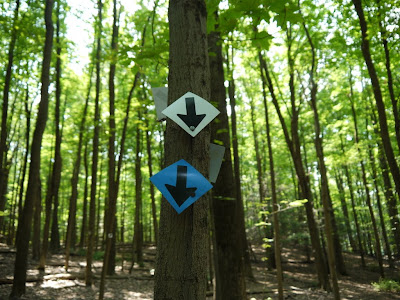
This begs the question: What did Monarch Caterpillars do before people began haying? The butterflies have multiple generations each season, migrating north in spring and south in the fall. In the spring they are looking for newly sprouting Milkweed (Butterfly Weed is in the Milkweed family). In the fall, Milkweed is generally tough and lower in nutrition, so cut hayfields provide a great source of young plants. Perhaps in the old days it was burned-over areas.
The caterpillars you see now should be the final generation for the season. After they change into a butterfly, they will fly south to Mexico for the winter. This little caterpillar has quite a journey ahead of him!
The caterpillars you see now should be the final generation for the season. After they change into a butterfly, they will fly south to Mexico for the winter. This little caterpillar has quite a journey ahead of him!

















































